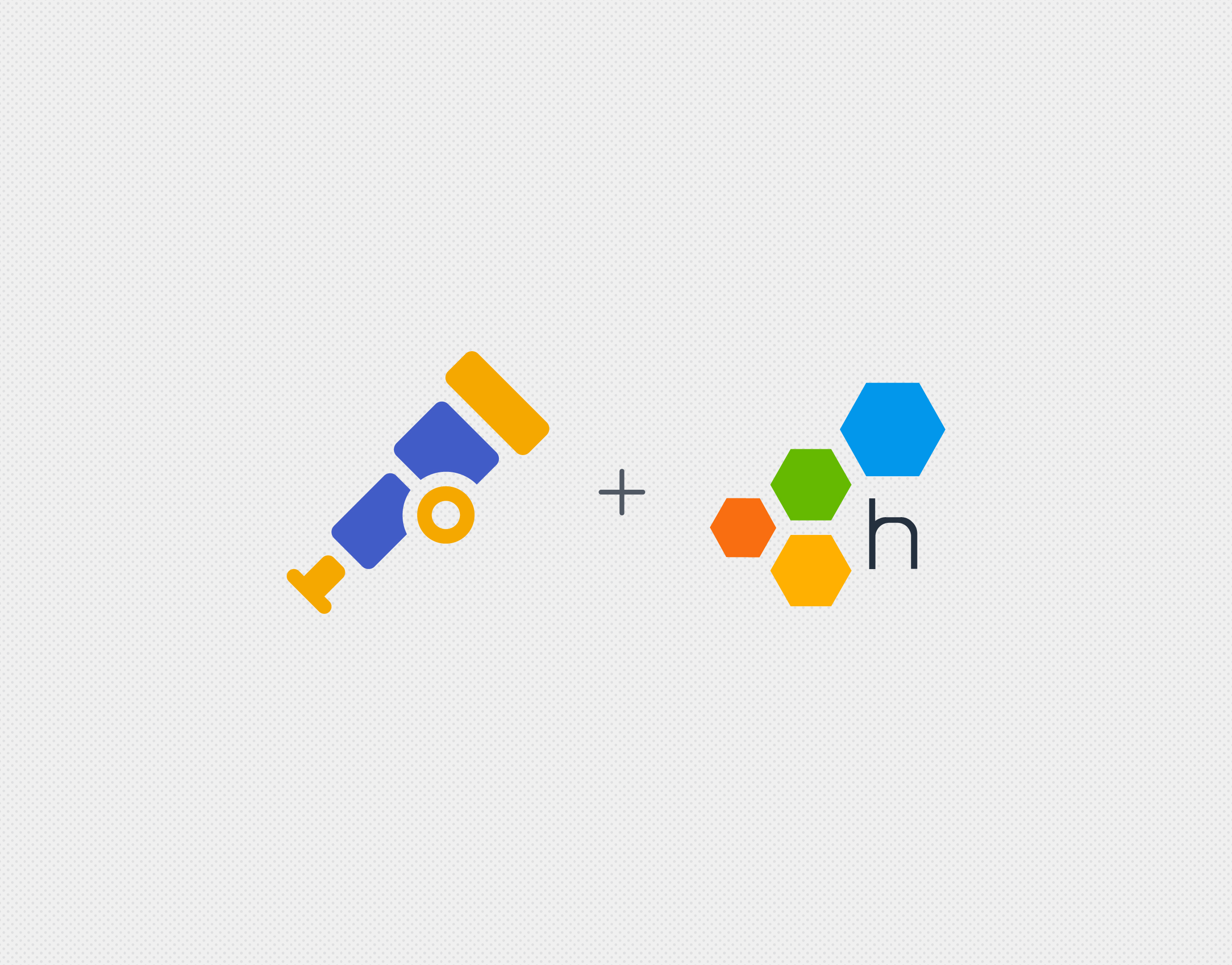The promise of OpenTelemetry is that it can help you avoid vendor lock-in by allowing you to instrument your applications once, then send that data to any backend of your choice. This post shows you exactly how to do that with code samples that configure your application to send telemetry data to both Honeycomb and New Relic.
How Vendor Lock-in Became a Thing
As application architectures grew more complex, the tools we used to manage and maintain them needed to evolve. Traditional monitoring solutions, which probe your applications externally, are great for alerting you when something is wrong, but where do you go from there? In large, complex systems, these tools don’t provide sufficient context to actually track down and solve problems.
Application instrumentation is the backbone of APM tools. In order to provide richer diagnostic data than traditional monitoring tools, app maintainers would add vendor-specific agents or libraries to their projects. While each vendor provided some preconfigured baselines, maintainers would still need to manually add their own instrumentation to ensure that the insights reported to their vendor’s dashboard were relevant to their specific use case. This instrumentation would be added in that vendor’s specific parlance, making it non-transferable to other implementations. The result is upfront time savings when getting started — but that time will inevitably be collected back with an order of magnitude in accumulated interest if you decide to change tooling providers.
What happens when another vendor comes along with some compelling differentiator or killer feature that warranted investigation? That’s when the pain begins.
You’d first have to rip out all the old instrumentation from your codebase, then reinstrument with an entirely new set of code and dependencies. And if it turns out the new tool isn’t up to snuff? Then, it’s time to roll everything back and start over.
No wonder organizations were stuck using whichever tool they happened to pick up first! After doing the dance of reinstrumenting and potentially losing historical data, you’d be more likely to give up and learn to live with what you had.
That’s the trap of vendor lock-in, and it sucks.
OpenTelemetry Unlocks Vendor Lock-in
If you’ve ever found yourself with tools that weren’t serving you but the cost of implementing (or even evaluating) an alternative was too high to consider switching, then you understand why the vendor lock-in problem is unacceptable. OpenTelemetry aims to break that cycle by providing a standardized instrumentation framework.
Out of a shared frustration with the state of proprietary telemetry affairs, standards began to emerge in the form of two parallel open source projects: OpenCensus and OpenTracing. Eventually, the communities merged and combined the two standards into the OpenTelemetry project. While it’s still a relatively new kid on the block, OpenTelemetry (or OTel) is growing up fast and was recently accepted as a CNCF incubating project.
OpenTelemetry provides an open standard for generating, collecting and exporting application telemetry across any number of backend systems. It’s an open source and vendor-neutral instrumentation framework that frees you from the trap of using proprietary libraries simply to understand how your code is behaving. Now, you can instrument your applications just once and then take that instrumentation to any other backend system of your choice.
Vendors should have to compete for your love based on how well they can delight you and solve your problems, not based on how annoying it is to get rid of them. With OTel, that’s finally possible. Sounds pretty good, right?
Let’s take a look at how switching vendors with OTel might look in practice.
How to Switch Vendors with OpenTelemetry
We’ll start with a simple Node.js Express app. We just have one route, and we fetch a todo to keep things interesting.
// app.js
const express = require("express");
const https = require("https");
const app = express();
app.get("/", async (req, res) => {
https.get("https://jsonplaceholder.typicode.com/todos/1", (incoming) => {
incoming.on("data", (data) => {
console.log(JSON.parse(data))
});
incoming.on("end", () => {
res.send("OK")
});
});
});
app.listen(3000, () => {
console.log(`Listening for requests on http://localhost:3000`);
});
Now let’s sprinkle some OTel on it. We’re going to add a few dependencies and introduce a tracing.js file that initializes the OTel SDK.
"dependencies": {
"@grpc/grpc-js": "1.3.7",
"@opentelemetry/api": "1.0.3",
"@opentelemetry/auto-instrumentations-node": "0.25.0",
"@opentelemetry/exporter-collector-grpc": "0.25.0",
"@opentelemetry/sdk-node": "0.25.0",
"express": "~4.16.1"
}
// tracing.js
const opentelemetry = require('@opentelemetry/sdk-node');
const { getNodeAutoInstrumentations } = require('@opentelemetry/auto-instrumentations-node');
const { CollectorTraceExporter } = require("@opentelemetry/exporter-collector-grpc");
const { credentials } = require("@grpc/grpc-js");
const traceExporter = new CollectorTraceExporter({
credentials: credentials.createSsl(),
});
let sdk = new opentelemetry.NodeSDK({
traceExporter,
instrumentations: [getNodeAutoInstrumentations()]
});
sdk.start()
We’re going to configure the rest of the OTel pipeline via environment variables. First, let’s point it at Honeycomb.
export OTEL_EXPORTER_OTLP_ENDPOINT="https://api.honeycomb.io" export OTEL_EXPORTER_OTLP_HEADERS="x-honeycomb-team=MY_HNY_KEY,x-honeycomb-dataset=otel-node" export OTEL_SERVICE_NAME="express-backend"
Now, when we run our traced app and hit our endpoint, we see some lovely trace data in Honeycomb UI.
node -r tracing.js app.js

Of course, we don’t stop here. We want to know what kind of todo we fetched. Let’s add a span with the todo title as an attribute.
// app.js
const otel = require("@opentelemetry/api");
let tracer = otel.trace.getTracer("my-tracer");
app.get("/", async (req, res) => {
https.get("https://jsonplaceholder.typicode.com/todos/1", (incoming) => {
let span = tracer.startSpan("reading-todo");
incoming.on("data", (data) => {
span.setAttribute("title", JSON.parse(data).title)
});
incoming.on("end", () => {
span.end();
res.send("OK")
});
});
});

Oh hey, we got another span in our trace, and it shows the todo title!
Now, let’s say that you want to send your data somewhere other than Honeycomb. Easy — just swap out your endpoint and headers. Let’s look at New Relic as an example.
export OTEL_EXPORTER_OTLP_ENDPOINT="https://otlp.nr-data.net:4317/" export OTEL_EXPORTER_OTLP_HEADERS="api-key=MY_NR_KEY"
Now, after re-running the app and hitting the endpoint, we can see the trace, including our very useful todo title, in New Relic.

But what if you’re not quite ready to make the switch and want to shop your data around multiple vendors? The OpenTelemetry Collector is an OTel component that allows you to ingest, process and export telemetry by configuring data pipelines. It’s not a required component, but in this case, we can leverage it to send our traces to both Honeycomb and New Relic. We start by running the collector locally in a Docker container.
docker run -p 4317:4317 -v /collector-config.yaml:/etc/collector-config.yaml otel/opentelemetry-collector —config=/etc/collector-config.yaml
receivers:
otlp:
protocols:
grpc:
exporters:
otlp/hny:
endpoint: api-dogfood.honeycomb.io:443
headers:
"x-honeycomb-team": "MY_HNY_KEY"
"x-honeycomb-dataset": "otel-node"
otlp/nr:
endpoint: otlp.nr-data.net:4317
headers:
"api-key": "MY_NR_KEY"
service:
pipelines:
traces:
receivers: [otlp]
exporters: [otlp/hny,otlp/nr]
Because now our Node.js app will be sending data to the Collector on localhost, we need to update our gRPC credentials to be insecure.
// tracing.js
const traceExporter = new CollectorTraceExporter({
credentials: credentials.createInsecure(),
});
Finally, we swap our endpoint for the collector address.
export OTEL_EXPORTER_OTLP_ENDPOINT=localhost:4317
Now, after we run the app and hit our endpoint, the trace appears in both Honeycomb and New Relic. This is what lets you compare and contrast different vendor solutions to your heart’s desire!
Break Yourself out of the Cycle of Vendor Lock-in
The example in this blog is a trivial one, but think of the dozens (or hundreds? Hello, microservices) of endpoints and code paths that can be left blissfully unaware of your tracing backend. With OpenTelemetry, there is no need to hardcode vendor-specific logic into your applications only to get stuck with them until the end of time.
OpenTelemetry enables you to have more agency over your telemetry data and opens more doors when choosing a vendor (or multiple vendors!). At Honeycomb, we believe that the value we provide for you is evident once you start analyzing and debugging your telemetry. Observability is measured by your ability to quickly identify the correct sources of issues and to discover hidden problems that legacy tools simply can’t show you. Those metrics, logs, and traces are simple table stakes, and you shouldn’t be locked into a particular solution just to get your data.
We fully support the OpenTelemetry project, and we hope you’ve found this step-by-step example helpful.
Try It for Yourself
Did we pique your interest in OpenTelemetry? If you’re ready to dive in, check out our quickstart docs for setting up OTel with Honeycomb, and, if you haven’t already, sign up for a free Honeycomb account. If Honeycomb doesn’t work for you, you’ll be able to take that work elsewhere.
You can also learn more about the project, find documentation and join the OTel community at https://opentelemetry.io/









